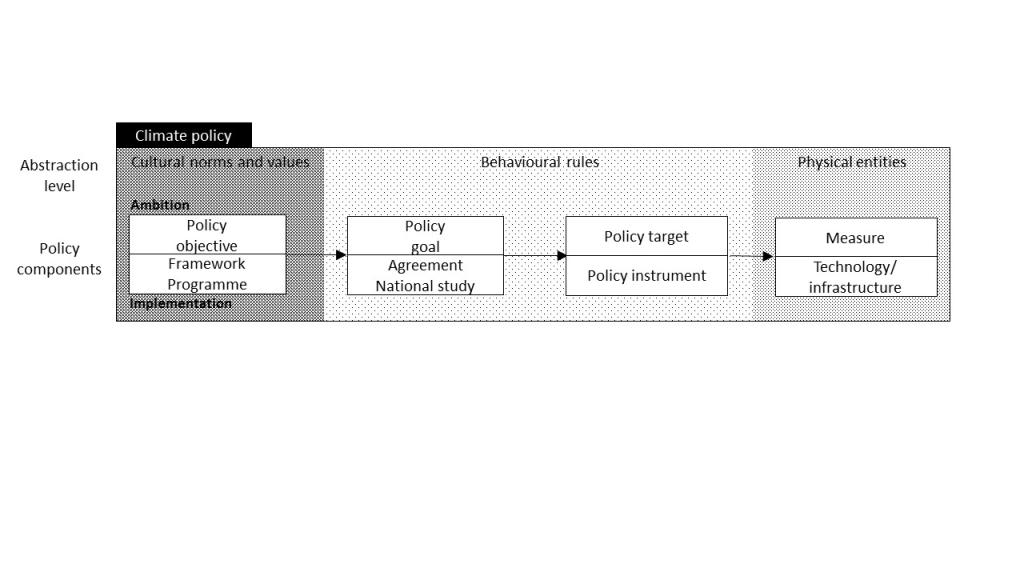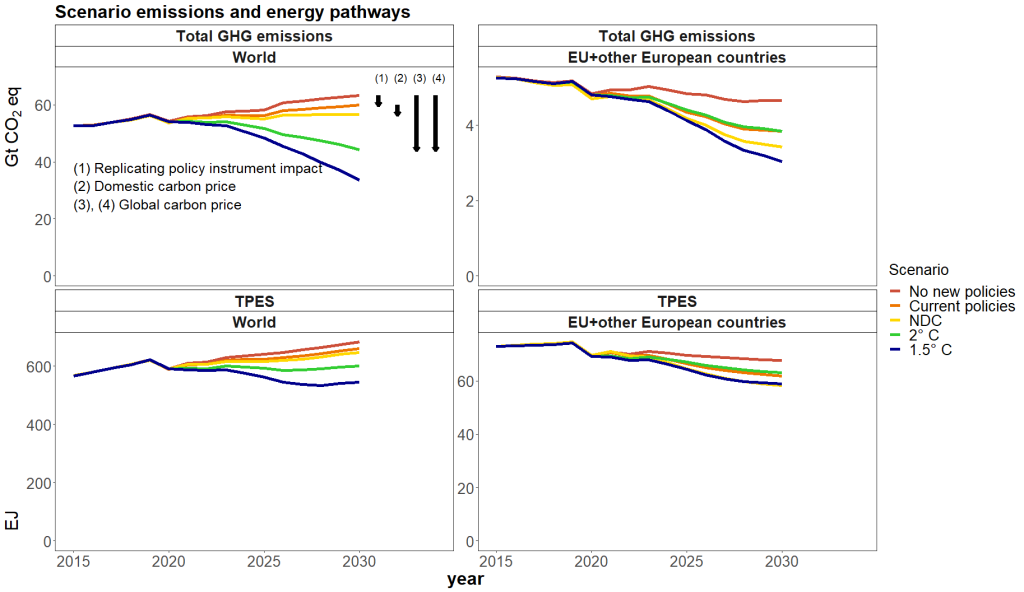Bridging the policy-modelling divide
The framework presented in this study aims to provide insights into how climate policy is represented in integrated assessment models, responding to the call to link model scenarios with concepts used in public policy literature and related fields. As such, it contributes to increased transparency leading to better understanding across disciplines and communication about the relevance of model outcomes with policymakers.
The framework categorizes climate policy into policy aims and policy implementation at different stages of the policy cycle, and can be used to demarcate different climate policy scenarios incorporating and linking the international and national level (see Figure 1). This approach provides clarity on critical modelling assumptions concerning the workings of policy to scenario users (including policymakers), such as policy stringency and status.

We discuss the framework in relation to scenarios exploring pathways meeting the long-term Paris goal to hold temperature well below 2°C or 1.5°C, Nationally Determined Contributions submitted to the Paris Agreement, and current implemented policies. Specifically, the application of the framework and model implementation of the scenarios is illustrated with implementation in the IMAGE model for the World and the EU (see Figure 2). To project the expected policy impact on greenhouse gas emissions, the policy goals and policy instrument targets are translated into model targets. This is implemented in the model by either changing parameters for available policy instruments, such as carbon price or subsidies, or adjusting model parameters such as efficiency and costs to meet targets.

- Artikel | 13 May 2022to the article on the PBL website